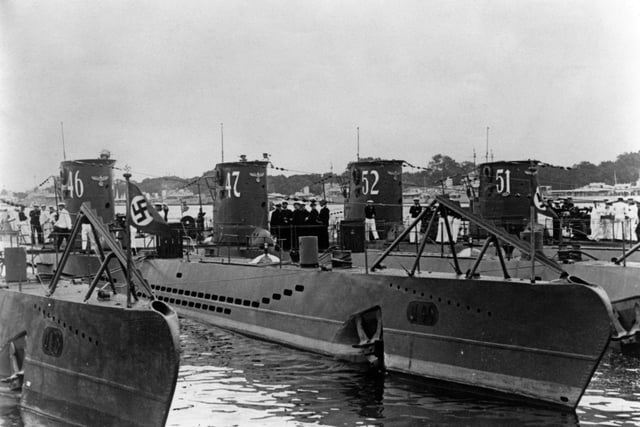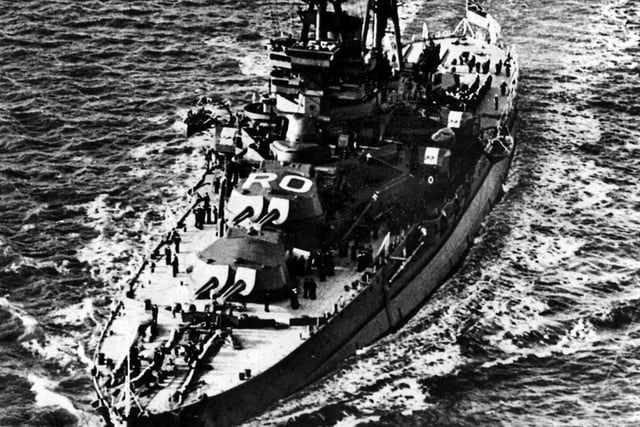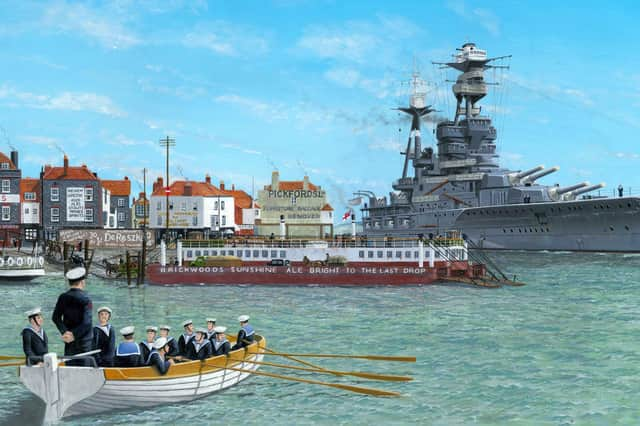On 14 October 1939, Royal Oak was anchored at Scapa Flow in Orkney, Scotland, when she was torpedoed by the German submarine U-47. Of Royal Oak's complement of 1,234 men and boys, 833 were killed that night or died later of their wounds. The loss of the old ship - the first of the five Royal Navy battleships and battlecruisers sunk in the Second World War - did little to affect the numerical superiority enjoyed by the British navy and its Allies.
However, the sinking had considerable effect on wartime morale. The raid made an immediate celebrity and war hero out of the U-boat commander, Günther Prien, who became the first German submarine officer to be awarded the Knight's Cross of the Iron Cross. Before the sinking of Royal Oak, the Royal Navy had considered the naval base at Scapa Flow impregnable to submarine attack. U-47's raid however demonstrated that the Germans were capable of bringing the naval war to British home waters. The shock resulted in rapid changes to dockland security and the construction of the Churchill Barriers around Scapa Flow.
The wreck of Royal Oak, a designated war grave, lies almost upside down in 100 feet (30 m) of water with her hull 16 feet (4.9 m) beneath the surface. In an annual ceremony to mark the loss of the ship, Royal Navy divers place a White Ensign underwater at her stern.
In this selection you will see her in Portsmouth Harbour and harbour in Malta prior to the Second World War, the man responsible for her sinking and the front page of the Portsmouth Evening News and how it was reported at the time.
The wreck of Royal Oak, a designated war grave, lies almost upside down in 100 feet (30 m) of water with her hull 16 feet (4.9 m) beneath the surface. In an annual ceremony to mark the loss of the ship, Royal Navy divers place a White Ensign underwater at her stern.

5. Royal Navy ship HMS Royal Oak
The man who sank Royal Oak - U-47 commander Kapitanleutnant Gunther Prien Photo: The News archive

6. Royal Navy ship HMS Royal Oak
Kapitanleutnant Gunther Prien and his officers gather on the deck of the U-47, a Type VIIB U-boat submarine of the German navy (Kriegsmarine) while tied up alongside the U-46, U-52 and U-51 Unterseeboot at the Germaniawerft naval base on 1 August 1939 in Kiel, Germany. Gunther Prien and U-47 sank the British battleship HMS Royal Oak at anchor in the Home Fleet's anchorage in Scapa Flow on 14 October 1939. (Photo by Central Press/Hulton Archive/Getty Images) Photo: The News archive

7. Royal Navy ship HMS Royal Oak
HMS Royal Oak in November 1938 Royal Oak returns the body of Queen Maud to Norway, flying both the Norwegian flag and the White Ensign at half-mast, about 24 November 1938 Picture: Navy News Photo: The News archive

8. Royal Navy ship HMS Royal Oak
15th October 1939: Anxious relatives read a list of survivors from the HMS 'Royal Oak' posted up at a South Coast Port. The Admiralty states that battleship was sunk by a U-boat. (Photo by E. Phillips/Fox Photos/Getty Images) Photo: The News archive

